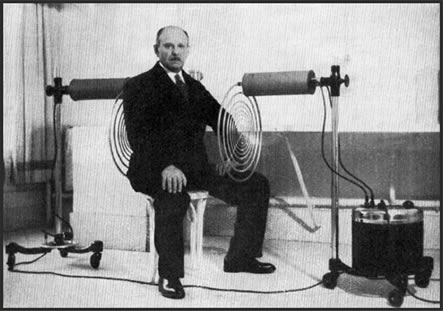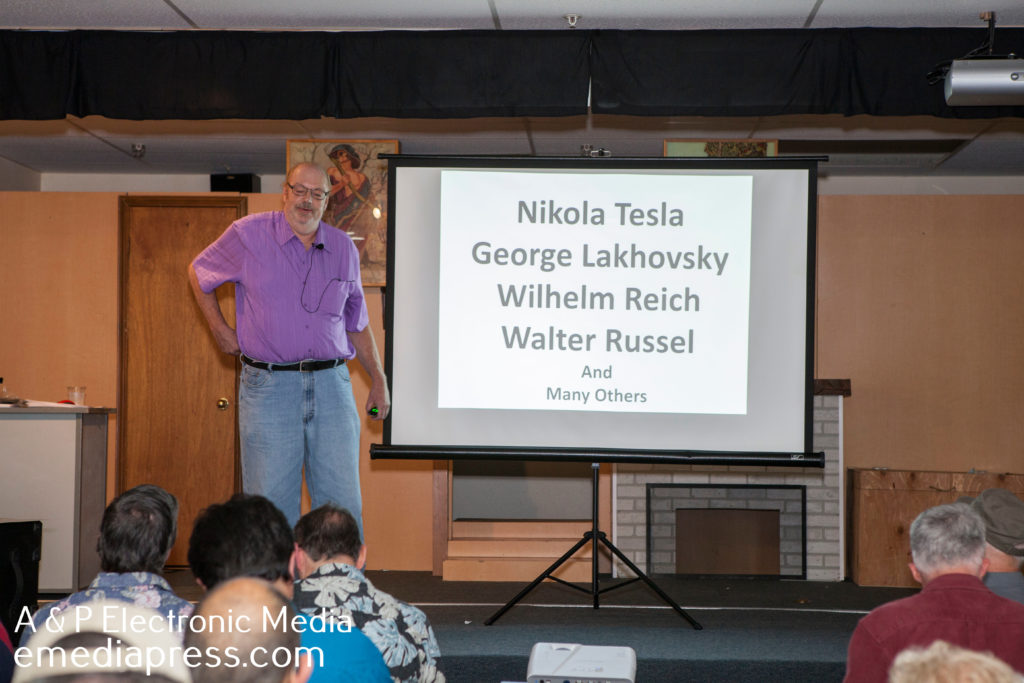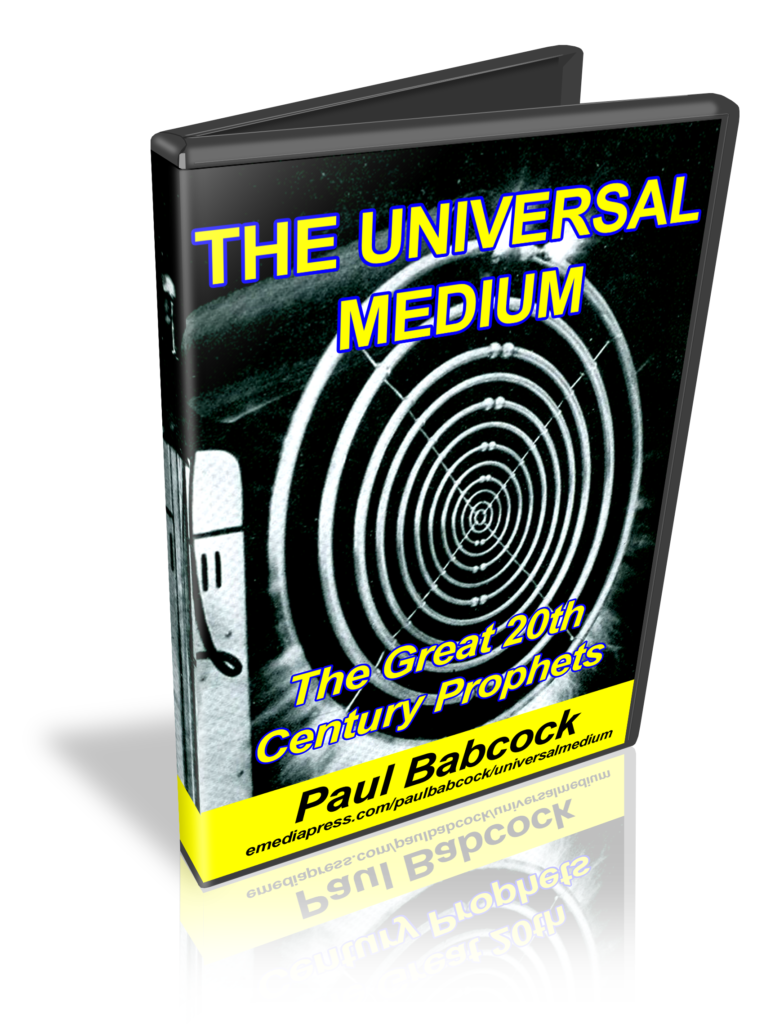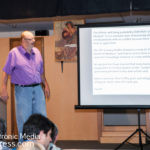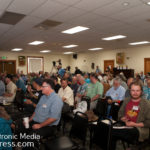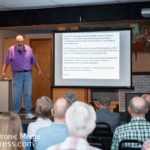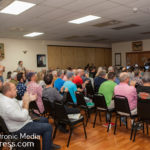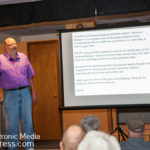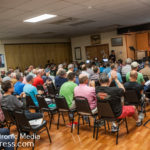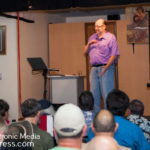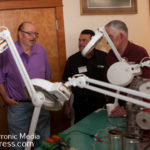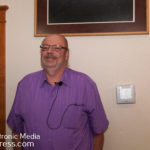For those intrigued by the historical roots of alternative science and the iconic Integratron in Landers, California, When Stars Look Down by George W. Van Tassel is a must-read. Published in 1976, this book offers a fascinating glimpse into Van Tassel’s ambitious vision for the Integratron—a structure designed to rejuvenate human cells by taking the principles of the Lakhovsky Multiwave Oscillator (MWO) to a new level. As one of the earliest English-language accounts of the MWO, and with ties to electrical engineer Eric Dollard, the last notable figure to work on the Integratron’s restoration, this book is a vital historical resource. AMAZON PAPERBACK: WHEN STARS LOOK DOWN, it provides essential context for understanding the Integratron’s place in alternative science history without promoting unproven claims like UFOs or extraterrestrial contacts, which are included for their historical significance. Below, we explore the book’s themes, its connection to the Integratron and MWO, and why it’s a key read for historians and enthusiasts.
Disclaimer: This blog post discusses the historical and theoretical aspects of the Lakhovsky Multiwave Oscillator as presented in When Stars Look Down. The information is not intended to endorse or validate claims about the MWO we manufacture or any other devices. Instead, it highlights the historical importance of Van Tassel’s work in relation to one of the most enigmatic buildings in the world, the Integratron, and its place in alternative science history. Unproven claims, such as UFOs or extraterrestrial influences, are discussed solely for historical context and not as endorsements of their validity.
Overview of When Stars Look Down
When Stars Look Down is a collection of essays and articles by George W. Van Tassel (1910–1978), a former aerospace worker and founder of the Ministry of Universal Wisdom. Drawn from his Proceedings newsletter, the book explores electromagnetic energies, anti-gravity, and spiritual ideas, with some references to extraterrestrial contacts that reflect the era’s UFO fascination. While these unproven claims are not promoted here, they provide historical context for Van Tassel’s motivations behind the Integratron—a 55-foot-diameter, dome-shaped structure begun in 1957 and erected in 1959, intended to extend human lifespan through cellular rejuvenation.
Key themes include:
- Electromagnetic Life Forces: Van Tassel views humans as “walking batteries,” powered by energies linking cells to broader forces (Chapters 5, 7, 19).
- Integratron’s Purpose: Described as a modern “Tabernacle” akin to Moses’ biblical structure, the Integratron aims to recharge cells instantly using electromagnetic principles (Chapter 17, “The Integratron” article).
- Historical Context of UFO Claims: Van Tassel’s assertions of extraterrestrial guidance in 1953 at Giant Rock, California, while unverified, shaped his vision for the Integratron (p. 188).
- Critique of Mainstream Science: Van Tassel argues that economic interests suppress alternative technologies (Chapters 12, 14).
Available on Amazon, the book’s narrative offers a historical snapshot of mid-20th-century alternative science.
Why Read When Stars Look Down for the Integratron?
The Integratron, located in the Mojave Desert near Joshua Tree, is a global icon of alternative science, known for its acoustically perfect dome and current use as a “sound bath” venue by the Karl sisters since 2000. Listed on the National Register of Historic Places, it was designed as an electrostatic magnetic generator to rejuvenate cells, potentially extending lifespans (p. 175). Van Tassel envisioned it processing 10,000 people daily through a 270-degree arc (p. 146), an ambitious attempt to elevate the MWO’s principles to a new level.
When Stars Look Down is essential for understanding the Integratron because it:
- Details the Vision: The book outlines the Integratron’s design, combining principles from Nikola Tesla, Georges Lakhovsky, and others, controlled by a “time function” for instant cellular effects (pp. 146, 173-174). It frames the Integratron as an evolution of the MWO, aiming for greater efficiency.
- Provides Historical Context: While Van Tassel’s claims of extraterrestrial inspiration in 1953 are unproven, they reflect the cultural backdrop of the 1950s-1970s UFO movement and his motivations (p. 188).
- Connects to Eric Dollard: The Integratron’s historical significance is amplified by Eric Dollard, the last engineer to work on it in the 1980s. Dollard, a Tesla enthusiast, spoke with Van Tassel’s son-in-law, Daniel Boone, who provided insights into the project. In a 2012 Energetic Forum post, Dollard noted, “By good fortune his son in law, Daniel Boone, who was present at the visitation by the E.T., was very helpful” (Energetic Forum Integratron Search). Dollard worked on components like the Di-Rod electrostatic generator but faced conflicts with Van Tassel’s second wife, Dorris. For more, watch his 2014 interview with Scott Hensler, reposted in 2025 (Integratron Interview), his latest 2025 interview on the Integratron’s background (Dollard’s Integratron Background Story), or an excerpt from his Four Quadrant Representation of Electricity (Integratron Excerpt). Dollard’s full presentation, dedicating a significant portion to the Integratron, is a must-see for technical insights (Four Quadrant Representation of Electricity).
The book is a primary source for the Integratron’s origins, making it vital for understanding its ambitious design and Dollard’s contributions.
The Lakhovsky Multiwave Oscillator: An Early English-Language Account
When Stars Look Down is one of the earliest English-language accounts of the Lakhovsky Multiwave Oscillator (MWO), a 1920s device by Georges Lakhovsky aimed at promoting health through electromagnetic frequencies. Referenced in Chapters 12, 17, and the “Integratron” article (pp. 108, 146, 173-174), the book details the MWO’s historical use and technical principles, making it a key resource for studying early alternative technologies.
- Technical Insights: Van Tassel describes the MWO as generating a broad-spectrum electromagnetic field (10 cm to 400 meters, with harmonics up to 300 trillion vibrations per second), enabling cells and tissues to resonate at their natural frequencies for health benefits (p. 174). Readers can explore the book for detailed applications.
- Historical Context: Used in French clinics in the 1920s and 1930s with no reported harmful effects, the MWO is documented in Lakhovsky’s The Secret of Life (1939) (p. 174). Van Tassel’s 1976 account predates many modern discussions in alternative science communities.
- MWO and Integratron: Van Tassel saw the MWO’s side effect—cellular rejuvenation—as the Integratron’s primary purpose, achieved instantly through a “time function control” combining Lakhovsky’s principles with Tesla’s ionization and Barnothy’s magnetic fields (pp. 146, 174). He writes, “Where Georges Lakovsky created regeneration in the cell structure of his subjects, as a side effect of his basic principle, we use his side effect as our basic purpose” (p. 146).
This early documentation is crucial for tracing the MWO’s influence on projects like the Integratron, offering historical context without endorsing unproven claims.
The Integratron and MWO: A Pioneering Connection
The Integratron represents an ambitious attempt to take the MWO to a whole new level. Van Tassel viewed the MWO’s ability to promote cellular health as a foundation, but its weeks-long treatment periods were a limitation. The Integratron, built on a geomagnetic vortex with non-ferromagnetic materials, aims to instantly rejuvenate cells, drawing inspiration from Moses’ Tabernacle and the Great Pyramid (pp. 147-149). By integrating Lakhovsky’s multiple wave oscillation with other technologies, Van Tassel sought to create a revolutionary “energy machine” (p. 146).
This connection is significant because it positions the Integratron as an evolution of the MWO, blending early electromagnetic theories with a bold vision. The book’s explanation of this link provides a unique perspective on how alternative science sought to harness universal energies, making it essential for understanding the Integratron’s historical and theoretical roots.
Why You Should Read It
When Stars Look Down is a compelling read for:
- Historical Context: It documents Van Tassel’s vision during the 1950s-1970s UFO movement, providing context for the Integratron’s origins without promoting unproven extraterrestrial claims. It’s a primary source for Dollard’s work, detailed in his 2025 interview (Dollard’s Integratron Background Story).
- MWO Insights: As an early English account of the MWO, it offers technical and historical details, ideal for studying alternative technologies.
- Integratron’s Legacy: The book explains the Integratron’s design and purpose, crucial for understanding its connection to Dollard’s efforts, as explored in his Four Quadrant Representation of Electricity (Four Quadrant Representation of Electricity).
- Cultural Significance: For enthusiasts of alternative science history, it offers a firsthand narrative from a key figure, available on Amazon.
For further insights, explore Dollard’s posts on the Energetic Forum or his 2014 interview (Integratron Interview).
Conclusion
When Stars Look Down by George W. Van Tassel is a historical gem for those fascinated by the Integratron and the Lakhovsky Multiwave Oscillator. Its early account of the MWO and detailed vision for the Integratron—as an ambitious evolution of the MWO—make it essential reading for historians and enthusiasts, with Eric Dollard’s restoration efforts adding technical depth. While unproven UFO claims are part of its historical context, the book’s value lies in its documentation of alternative science’s roots. Dive into this captivating narrative, available on Amazon, to explore the Integratron’s legacy and its place in the history of unconventional technology.

